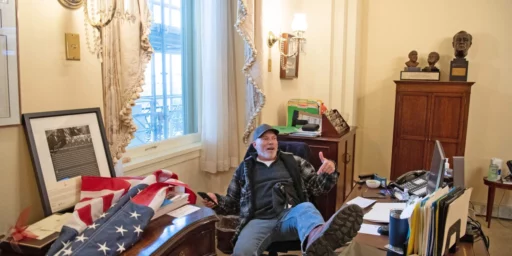SysAdmin Role and Counterinsurgency
Thomas Barnett is quite enthusiastic about Terence Daly’s NYT op-ed earlier in the week entitled, “Killing Won’t Win This War.” The essence of Daly’s argument:
Counterinsurgency is work better suited to a police force than a military one. Military forces — by tradition, organization, equipment and training — are best at killing people and breaking things. Police organizations, on the other hand, operate with minimum force. They know their job can’t be done from miles away by technology. They are accustomed to face-to-face contact with their adversaries, and they know how to draw street-level information and support from the populace. The police don’t threaten the governments they work under, because they don’t have the firepower to stage coups.
The United States needs a professional police organization specifically for creating and keeping public order in cooperation with American or foreign troops during international peacekeeping operations. It must be able to help the military control indigenous populations in failing states like Haiti or during insurgencies like the one in Falluja.
The force should include light armored cavalry and air cavalry paramilitary patrol units to deal with armed guerillas, as well as linguistically trained and culturally attuned experts for developing and running informants. It should be skilled and professional at screening and debriefing detainees, and at conducting public information and psychological operations. It must be completely transportable by air and accustomed to working effectively with American and local military forces.
Barnett has seen this idea before:
I call the 100 percent solution set System Administration, and in that solution set, as I argued in BFA (p. 52), “the SysAdmin force will be roughly one-half military, one-quarter civilian uniformed police, and one-quarter civilian government workers with expertise in disaster relief, nation building, and economic development.”
I also wrote that total US participation “should hover in the 10 to 20 percent range.”
I’ve been arguing since the 1992 Somalia op that the Defense Department needed to radically upgrade its linguist, civil affairs, psyop, and Special Forces capability for what were then called “Operations Other than War” and have since been variously called many things, most lately “Stability Operations.” Counterinsurgency calls for essentially the same skill set but, as Daly notes, a lethal edge as well.
The problem with civilianizing this task, however, is manifold. Most obviously, civilians can simply quit rather than risk assignment to hostile fire zones. For unpopular and/or drawn out operations like that in Iraq, it’s far from clear that we could get these civilian super-cops to deploy.
Further, as the current attempt to cobble together an peacekeeping force for southern Lebanon demonstrates once again, having 80-90 percent of the force for these sorts of operations peformed by non-Americans is a fantasy. Barnett is no doubt right in saying that it’s ideal from a mission accomplishment perspective but, realistically, getting a combination of willingness and competency on the part of a significant number of other countries on a regular basis is just not going to happen.






Of course, this is what John Kerry argued as well. Look where it got him–crushed at the polls.
It was good that Kerry was crushed, because as Bush said during his press conference: “And somebody said, well, this is law enforcement. No, this isn’t law enforcement, in my judgment…This is a global war on terror.”
In a global war on terror, all of this wimpy law enforcement doesnt do the trick. We just need to blow the place up.
I think there are lots of problems with Barnett’s ideas but the problem that no one seems to mention with his SysAdmin force idea is budget. Where is the money going to come from? Take it out of the Pentagon’s budget? Rots o’ ruck. An add-on to the current budget? Hah.
I don’t find anything magical about “civilian police” or “civilian government workers”. Saying you need units with different proportions of shooters to MPs to clerks may make sense, but I don’t see what can be done within the framework of the military.
And of course if you did use military personnel, if you had a Tet situation, you might find their basic training to be useful.
What’s ‘magical’ about a highly trained, diversely staffed police force is the intelligence and cooperation that are yielded from a secure environment. The key though is deploying the force right after previous state authority is defeated, making the transition as seamless as possible. Order is the solution to anarchy, and only from a state of order can an outside state attempt wholesale economic development, cementing the new ‘ruleset’ that the post-war occupation-then-government presides over.